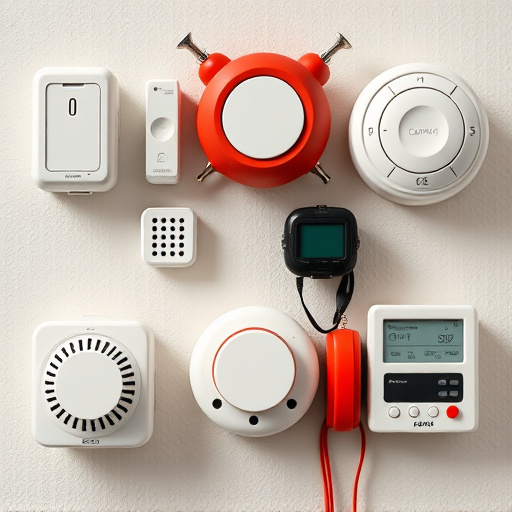Lone workers in construction, delivery, and healthcare face safety risks due to isolation. Personal alarms with remote activation capabilities are vital tools for immediate distress notification, ensuring swift assistance and potentially saving lives. Implementing these alarms, along with training and strategic best practices, enhances response times and promotes proactive safety management, meeting regulatory compliance requirements.
In today’s fast-paced work environment, lone workers face unique challenges. Understanding and mitigating risks is crucial for their safety. This article explores the vital role of safety alert systems, with a focus on personal alarms with remote activation technology. We delve into the benefits of these devices, from immediate distress signaling to hands-free use, enhancing worker protection in diverse industries. Additionally, we discuss best practices, regulatory compliance, and training to ensure effective implementation.
- Understanding Lone Worker Risks
- Benefits of Personal Alarms
- Remote Activation Technology
- Best Practices for Implementation
- Regulatory Compliance and Training
Understanding Lone Worker Risks
Lone workers, whether they are construction professionals, delivery drivers, or healthcare staff, face unique risks that require dedicated safety measures. These individuals often work in isolated environments, far from immediate assistance, making it crucial to understand and mitigate potential hazards. One of the primary concerns is the lack of immediate help during emergencies, which can escalate into critical situations quickly.
A vital tool in addressing these risks is a personal alarm with remote activation capabilities. This device empowers lone workers by providing them with a means to instantly notify emergency services or colleagues when they encounter dangerous situations. By simply pressing a button, the alarm can be triggered remotely, ensuring swift assistance and potentially saving lives.
Benefits of Personal Alarms
One of the most critical aspects of ensuring safety for lone workers is the implementation of effective communication tools, and personal alarms play a pivotal role in this regard. These compact devices offer a simple yet powerful solution for workers operating in isolated or remote locations. The primary benefit lies in their ability to trigger immediate assistance with just a single press, sending out distress signals to pre-designated contacts or emergency services.
A Personal Alarm With Remote Activation takes this functionality a step further by allowing colleagues or supervisors to remotely activate the alarm from a central location. This feature is invaluable in situations where verbal communication may be limited or impossible. By employing such advanced technology, organizations can ensure that lone workers are equipped with a means to signal for help promptly, ultimately enhancing their overall safety and peace of mind.
Remote Activation Technology
One of the key innovations in safety alert systems for lone workers is Remote Activation Technology. This technology allows a supervisor, colleague, or even a designated contact to remotely activate an employee’s personal alarm from a distance. A simple press of a button on a smartphone app or a dedicated control panel can trigger the alarm, ensuring immediate assistance in case of distress.
This feature is particularly vital for workers who are often isolated in remote locations or engage in high-risk activities. The Personal Alarm With Remote Activation provides an extra layer of protection, enabling swift response times and enhancing overall safety. By integrating this technology, companies can significantly reduce the risks associated with lone worker operations and promote a culture of proactive safety management.
Best Practices for Implementation
Implementing a safety alert system for lone workers should be approached with strategic best practices in mind. One key component to consider is the use of personal alarms with remote activation capabilities. These devices empower workers by allowing them to instantly signal for help in case of an emergency, even when they are out of direct communication range. To maximize effectiveness, organizations should ensure that all lone workers are trained on how to operate these alarms and are aware of the designated response protocols.
Additionally, establishing a robust communication infrastructure is essential. This includes providing clear instructions on activating the personal alarms and setting up regular check-in procedures. Regular training sessions can help keep everyone informed about system updates and emergency procedures. Integrating these best practices will contribute to creating a safer working environment for lone workers, minimizing risks, and ensuring prompt responses in case of emergencies.
Regulatory Compliance and Training
In the context of lone worker safety, regulatory compliance is paramount. Many countries and regions have implemented laws and guidelines mandating specific safety measures for workers operating alone, particularly in high-risk industries. One key aspect of this compliance involves ensuring that employees are adequately trained to recognize potential hazards and respond appropriately, including the correct use of personal alarm devices with remote activation capabilities. These alarms can be life-saving tools, allowing isolated workers to quickly signal distress or danger from any location.
Training should cover not only the technical operation of the alarm device but also scenario-based drills that mimic real-world situations. This includes teaching employees how and when to activate their personal alarms, as well as understanding the response protocols of their employers and emergency services. Regular refresher courses are essential to maintain proficiency and ensure that workers remain prepared for any unforeseen circumstances that may arise while operating alone.
Lone workers face unique risks, but implementing a personal alarm with remote activation technology can significantly enhance their safety. By adopting best practices for deployment and ensuring regulatory compliance through proper training, organizations can create a safer environment for these essential employees. This proactive approach not only protects individuals but also demonstrates a commitment to their well-being in today’s digital era.
